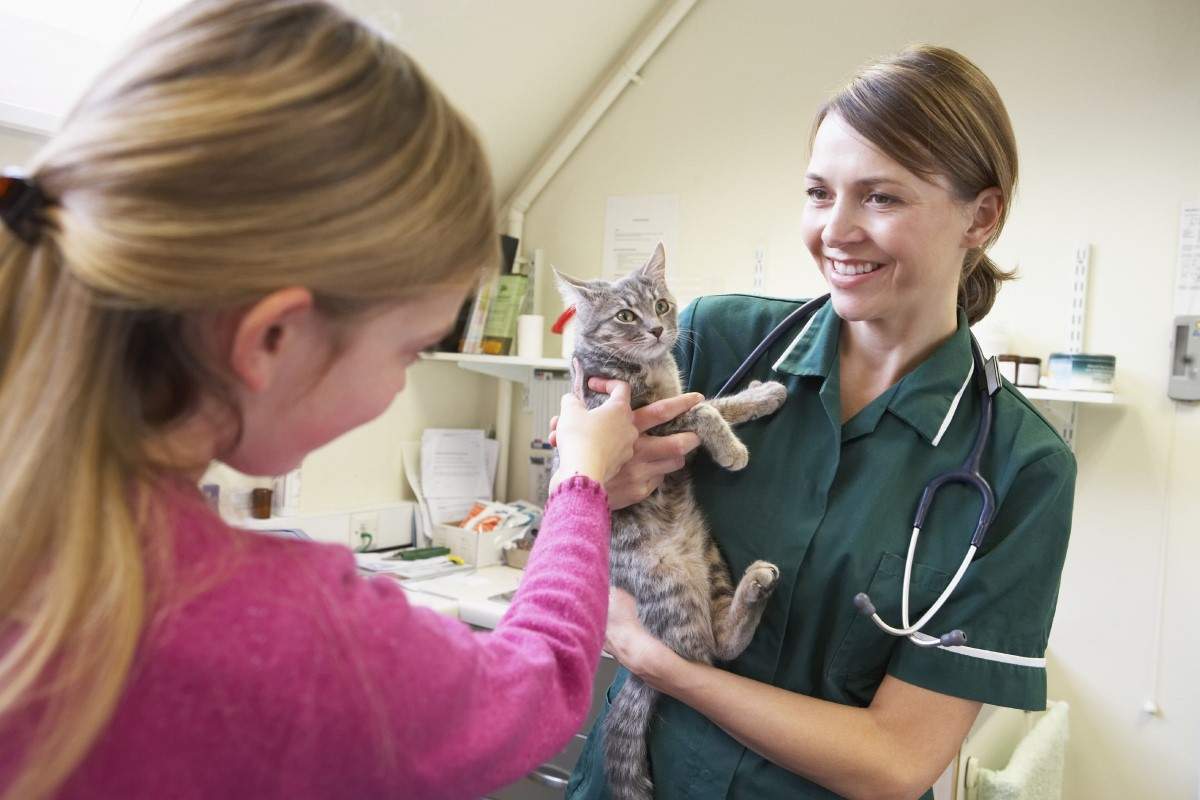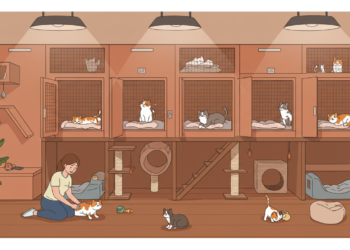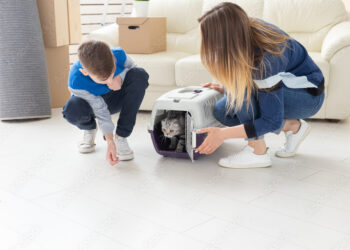It’s always ideal to go to the vet yearly for your cat’s wellness check. In-between visits though, it’s a good plan to continue observing your cat with home health checks. The Refined Feline has researched some necessary things you can do to check on your cat’s well-being. This will ensure that they’re in tip-top shape and that YOU are taking care of your furry friend!
Know Your Cat’s Usual Behaviors
Knowing your cat and what their normal behaviors are will help you realize when something is not right. Your cat will undoubtedly have a regular schedule they keep to, and have certain personality quirks you have noticed. Your cat will most likely do certain things at the same time during the day.
As a pet parent, your job is to know your cat the best and pick up on when they may not feel alright. You’ll know their chirps, meows, and purrs; also their general gait and movements, along with when they want treats and toys. It is important to note how your cat interacts with you, as well as other family members and when company comes over.
Reading Suggestion: The Best Cat Collars Of 2022
It’s also good practice for a pet parent to notice their bathroom habits, and how much they drink and eat when they’re feeling good. This can be your indicator for when they seem “off”; maybe they have a decreased appetite and this will alert you to any problems.
Cats are notorious for hiding their sickness as they would do this in the wild. It’s ultimately to keep them from being seen as prey as they don’t want to show weakness to any potential predators, and this behavior carries on with indoor cats.
It’s important to pay attention to those changes in your cat, whether it’s something they do every day or if it has only happened once. Even the tiny changes can be signs that something isn’t going well for your feline. Keep a close eye on your feline friend, as knowing your cat and how they act when they’re feeling “normal” will make it easier to spot these behavior changes!
On average, healthy cats will have round, bright, open eyes with a slight corner of their extra eyelid showing. They will make multiple trips to the litter box, as well as to their food and water bowls. Cats will defecate at least once, producing slightly soft feces that hold a shape, and typically urinate a few times a day.
Their coat should be free of mats, sleek, clean, and non-greasy. They should be able to move about freely, jumping without any issues. If you have cat wall shelves and notice your cat’s occasional clumsy jumps or movements start increasing, you may want to get them checked out.
How To Give Your Cat A Home Health Check
The easiest way to check your cat’s overall body condition is while petting them, perfect timing! Being covered in fur, it’s too easy for us to not see anything under that fluff, like a scratch, bite, or something stuck. You’ll want to ensure you’re checking them from top to bottom and feel your cat’s head, body, and tail for any bumps, lumps, and hair loss.
You can check for fleas by moving a small patch of fur aside and noting any small black dots, or you can use a flea brush. Move their limbs in an ambulatory fashion to check for any pain or stiffness. Your cat may not tolerate that for long, so you can also feel their limbs for any other concerns.
You’ll want to lift the patch of skin in-between their shoulder blades as this will show their skin’s elasticity and hydration. They are hydrated if the skin snaps back down quickly. Your kitty may be dehydrated if the skin is very slow to return, especially if they are on the younger side. An older cat may just have loose skin from shedding a few pounds over the years.
Your Cat’s Eyes & Ears During A Home Health Check
Next, look into your cat’s eyes and ensure they are bright and clear. They shouldn’t have any colored discharge or be squinted or weeping. The third eyelid being slightly visible is okay, but if it’s covering more of their eye, they may be feeling “blah”.
Your cat’s ears should be free of any discharge, wounds, parasites, and odor while maintaining a pink hue. To check their cleanliness, you can use a cotton ball or a makeup round with a little water. If you wipe out any discharge that is brown-colored, it’s most likely wax.
If it has an odor to it or is darker, there may be an infection in your cat’s ears. It’s best to leave the ears as they are and bring them to the vet to get a sample and treatment started. Your cat’s ears shouldn’t be at differing angles, either, which may be a sign that something is going on. Be sure to check their ears out often as cats will also excessively scratch their ears if there’s an infection.
Reading Suggestion: Boy Cat Names – Find the Perfect Male Kitten Name
Your Cat’s Mouth During A Home Health Check
Your cat may not allow you to check its mouth, but it is another vital area to keep an eye on. Try lifting their lip to confirm their gums are pink and free of inflammation or bleeding. Press the tip of your finger to their gums to turn them slightly pale, which should then return to a normal color.
If it’s slow to return back to pink, or they appear red or pale, your cat may need to visit your vet. Make sure you don’t see any teeth sticking out in irregular angles or severe inflammation around the tooth line. If there is any odor or bad breath, your cat may need their teeth cleaned by a veterinarian.
Depending on the condition of their mouth, they may require dental treatment. Check over your cat’s paws by pressing down and exposing their claws. Check for any wounds, broken nails, or thickening of their nails. This is also a great time to trim those nails to maintain proper nail health if needed.
Spotting the Signs
Sometimes a cat will feel perfect one day and not so great the next. Or when cats age, it can be more gradual, and you may notice them getting a little thinner. One clear sign that something is amiss is when they act the opposite of their norm day-to-day selves. Some examples of these changes can include:
- If you have a very quiet kitty at home, and suddenly they are meowing and vocalizing
- If your super energetic cat is always playing on their cat tower and is suddenly sleeping more and less active
- If you’re needing to refill the water bowl multiple times a day as your cat is suddenly drinking a lot of water
- If your well-mannered cat is suddenly not using the litter box any longer
- If you’re noticing more or less scooping of your cat’s litter box
- Any sudden or drastic behavioral changes, such as your demur cat becoming very cranky or agitated
Knowing what’s normal for your cat can help you detect when something is off. Being in tune with your cat’s actions can help you notice those minute changes, which could also bring big medical changes. The faster you notice something is wrong with your cat, the quicker you can get them seen by a veterinarian. Your cat will be feeling better in no time, and you’ll be content knowing your kitty is healthy and happy! You go, pet parent!










